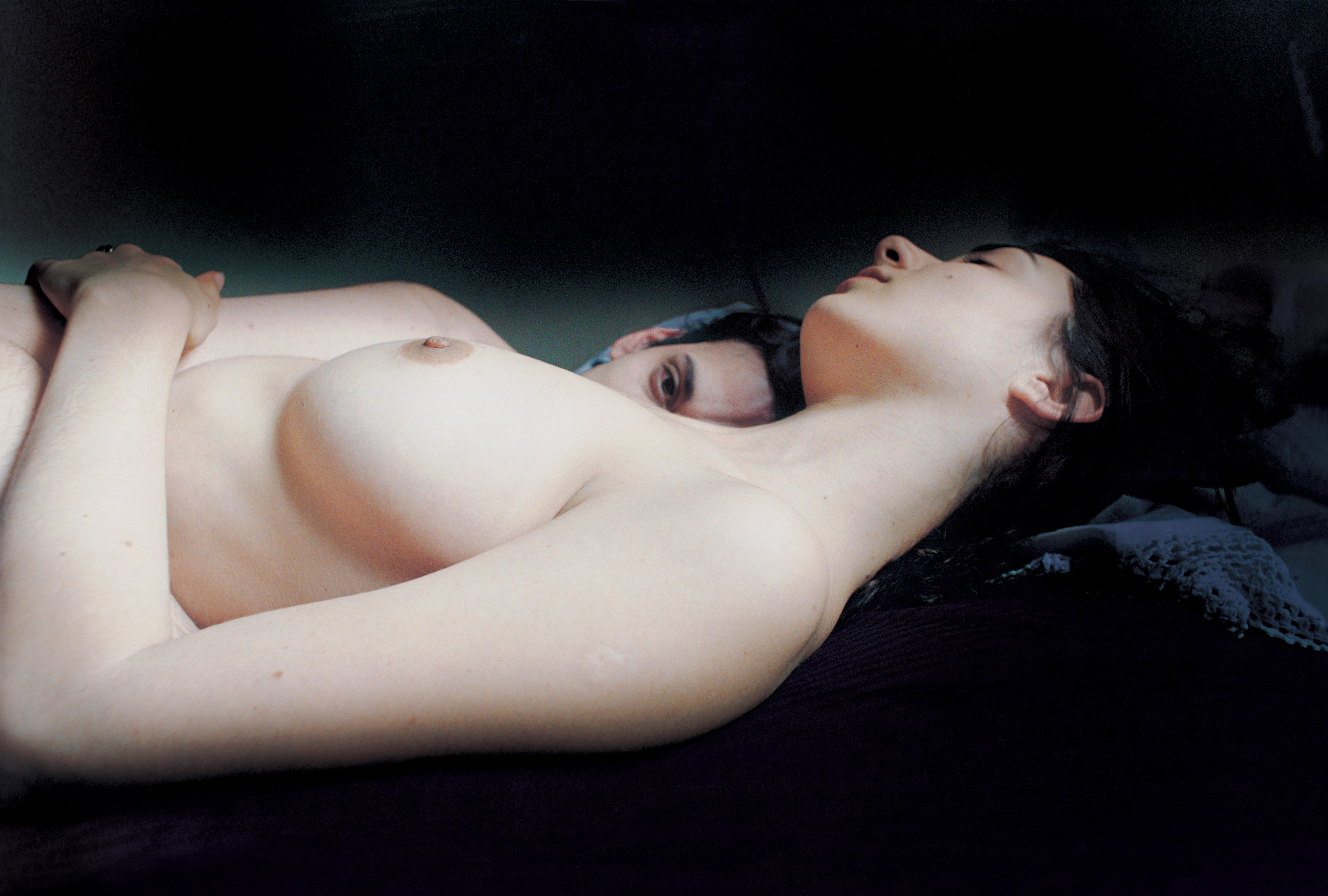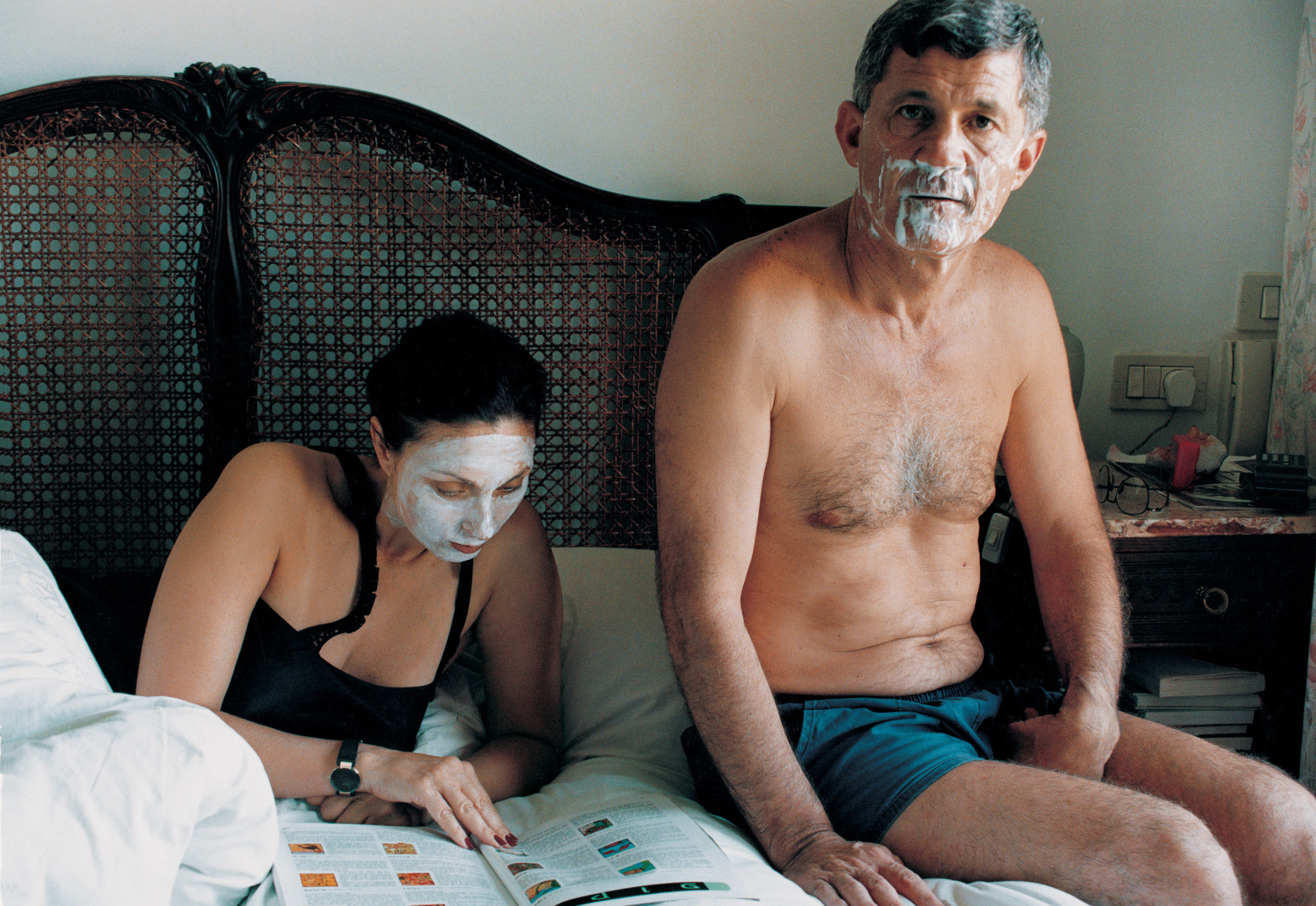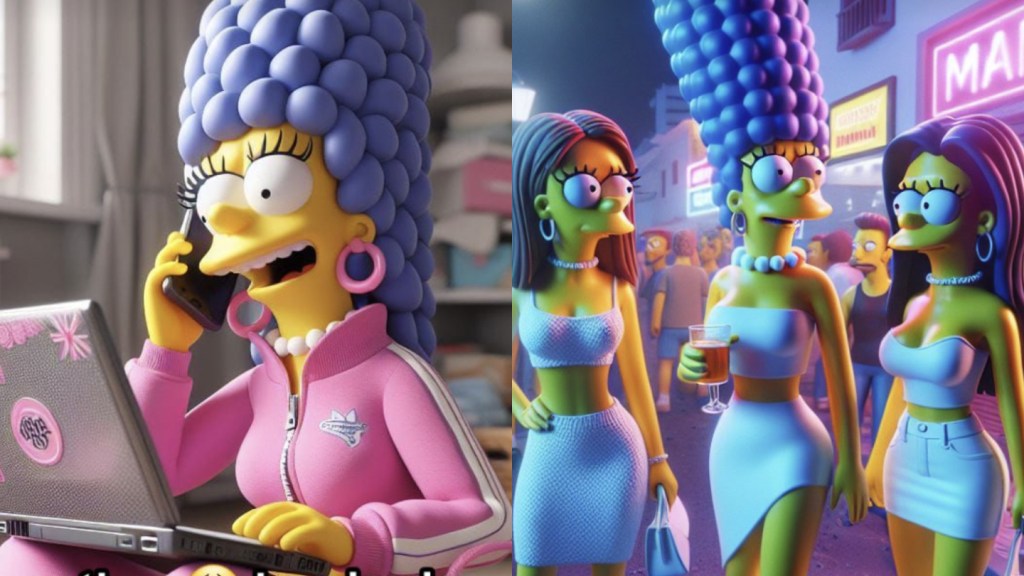Women are overlooked far too often in photography. How can we continue to combat this erasure? My answer is this column, “Woman Seeing Woman.” While it’s just the start of solving this problem, I, a female writer and photographer, hope to celebrate the astoundingly powerful female voices we have in photography by offering a glimpse into their work.
The first image I saw of Elinor Carucci’s work was her 2012 image “The Woman That I Still Am.” Lips painted a vibrant strawberry color, her face tilts away from the camera, touched by the tiny, clean hand of a child whose green eyes also peer inquisitively at the lens. It stopped me in my tracks. I am not a mother, nor have I ever been, but in that moment I gained insight into not just Carucci’s experience as a parent but the larger universality of parenthood. Trying to remember who you are as you develop the lives other humans, learning the depths of your own strengths and flaws as you navigate another being’s growing personality, realizing you are as constantly changing as your progeny. Seeing a single photograph and understanding a small piece of the world is the experience I hope for when looking at an image, let alone capturing one myself.
Videos by VICE
Her work was, and remains, radically intimate and courageous, from her photos of herself with her family and her partner and her relationship in crisis to her later images of their children. They were so powerful to me, in fact, that when in a lecture a few years later she discussed staging her images, I was devastated.
When I arrive at Elinor Carruci’s apartment, she is wearing what looks like the same creamy strawberry-colored lipstick from her image “The Woman That I Still Am.” Lithe and elegant, she carries herself like a dancer, brown hair peppered with grey resting in soft waves around her face. She is wildly accomplished–with work in the collections of The Museum of Modern Art, the Brooklyn Museum, the International Center of Photography’s Infinity Award for Young Photographer, three books, and countless other accolades–but she is warm and genuine. We laugh over my experience with her images. It’s not the first time someone has said this to her.
“I realized that, first, things that I do for the camera are not necessarily more or less honest or truthful. You can get a snapshot of someone that will tell a lie and…there is even something about the people I photograph doing something for the camera, for the presence of the camera, that even sometimes brings something more. They take more responsibility for what they’re doing…so when things were done for the camera sometimes the camera became a tool to send messages,” she says. “I know when people sometimes [discover the images are staged], they’re like, ‘Oh, I thought this was all real.’ It is real. It’s tools to even dig deeper.” In its engineering, her work teaches us something previously hidden from ourselves in the same ways that a great work of fiction or theatre or narrative film might. It is not a lie. It is the representation of the truth and Carucci’s mastery of that control–her ability to harness the truth-telling power of the camera; to create and then capture moments that show the true feelings she was experiencing, or that people experience, at a particular time; to reveal universal truths–that makes her work extraordinary.
Currently, Carucci is finishing a series of images about being in mid-life and working on another about looking at her children as teenagers in America. Born in Israel, Carucci is trying to understand their experiences while also giving them space and, as she puts it, “be cool but not too cool, not too desperate for them to like me,” she laughs. Her process has changed drastically for these images, she says, as she tries to relate to them. “We’re changing all the time and nothing stays the same, which is very annoying,” she says with a half-laugh. “Maybe that’s why I’m a photographer, maybe that’s why we all take pictures….Things are [happening] every day will never happen again and moments are being lost and people are being lost so I think this is what changes my work.”
Despite all the changes in her life, Carruci’s work has consistently retained the same intimacy of the first snapshots she took of her mother at 15. “For me it’s always been [that] the world out there seemed really cruel to me,” she says. “In order to survive in this world I feel that what we have, like love and intimacy between family and friends if we’re lucky, is what life is about. This is the other side of the cruelty of life. This is what keeps me inspired. This love and intimacy and compassion and unconditional, if we’re really fortunate, love, this is the reason to live.”









Sign up for our newsletter to get the best of VICE delivered to your inbox daily.




